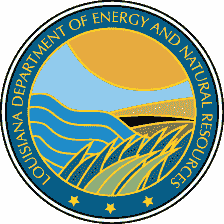Top Stories
Office of Conservation Calls for Cooperative Effort in Methane Testing of Bayou Corne Structures
Conservation-ordered shallow well monitoring network detects natural gas pressure near community at 20-to-40-foot depth
BATON ROUGE – Louisiana Commissioner of Conservation James Welsh today announced that the Office of Conservation will be coordinating with the state Department of Environmental Quality (DEQ) in seeking permission from property owners to do additional monitoring of Bayou Corne community homes to test for the accumulation of methane believed to be connected to the failure of Texas Brine’s cavern.
Although previous in-structure testing done by DEQ experts on the ground showed there were no natural gas accumulations in the structures tested, further testing will be conducted out of an abundance of caution to ensure public safety.
Welsh said the action is being taken in response to analysis and review of data provided by the network of 18 shallow monitoring wells the Office of Conservation instructed its contracted agent, Shaw Environmental and Infrastructure, to install in and around the community. These wells are part of the ongoing overall Office of Conservation response to formation of the nearby sinkhole and ongoing presence of natural gas underground and bubbling to the surface connected to the failure of Texas Brine’s abandoned brine cavern on the western side of the Napoleonville Salt Dome.
That monitoring-well network has detected underground natural gas at low pressure in an area shallower than the primary aquifer, which indicates a need for additional tests to look for potential presence of natural gas in structures built directly on the ground surface. For homes and structures built on supports that make space between the base of the building and the ground surface, natural air flow prevents interior accumulation of natural gas.
“We are asking for property owner cooperation in getting permission to perform systematic testing of as many of the structures built directly on the ground as possible to supplement previous testing indicating that natural gas had not made its way into homes,” Welsh said. “While analysis of the data we have available indicates that the risk of natural gas accumulation in homes is low, we want to have additional testing out of an abundance of caution. We will take no chances when it comes to public safety.”
Welsh said that while the Office of Conservation will continue to take immediate actions as needed to protect public safety, the Office will also continue to hold Texas Brine LLC accountable to meet the requirements of his previously issued orders to develop monitoring systems, install vent wells and take other actions to remediate the effects of the company’s failed brine cavern and assess and abate threats to public safety and the environment.
Welsh said that the Office of Conservation and DEQ had already acted to assess conditions in and below the community to determine what future actions were warranted, with Conservation’s having instructed Shaw E&I to install the initial monitoring-well network and having ordered Texas Brine to continue to install more; and with DEQ having offered in-home testing to Bayou Corne residents who requested it, in addition to the agency’s ongoing air and water testing in the area.
“Previous in-structure testing done by DEQ experts showed there were no natural gas accumulations in the structures they were allowed to test,” Welsh said. “That is encouraging, but we believe that a systematic sweep of as many structures as possible would provide greater certainty of safety.”
Determining whether natural gas is present in structures built directly on ground surface is one step in the process of assessing the potential impact to the community and achieving a return to normalcy for the community. The next step will be based on what is found through the in-structure sweep and ongoing monitoring and analysis of existing and future shallow monitoring-wells.
“We have not slowed in our efforts to fully understand the mechanics of the original failure and ongoing movement of natural gas in order to better direct the actions that give us the best opportunities to resolve the problems safely and as quickly as possible,” Welsh said. “We will continue to make use of the best science and respond based on evaluation of that data, and require the responsible party to take all appropriate actions to rectify the situation.”
News Archives »
